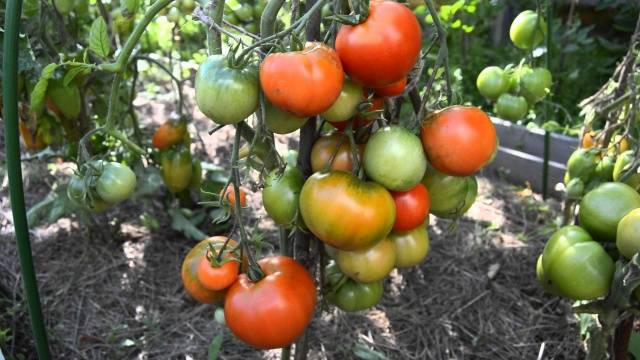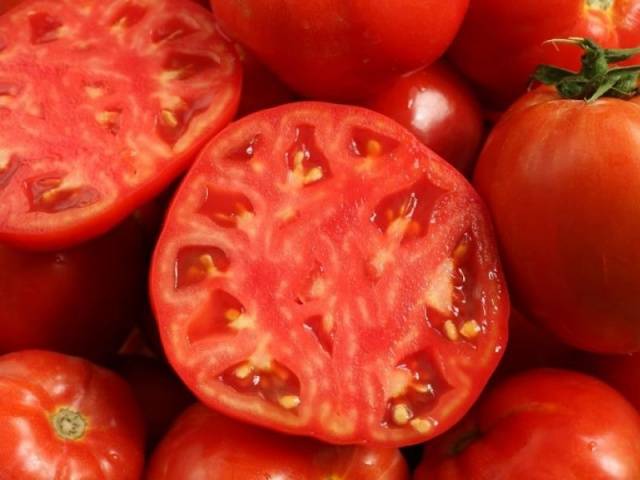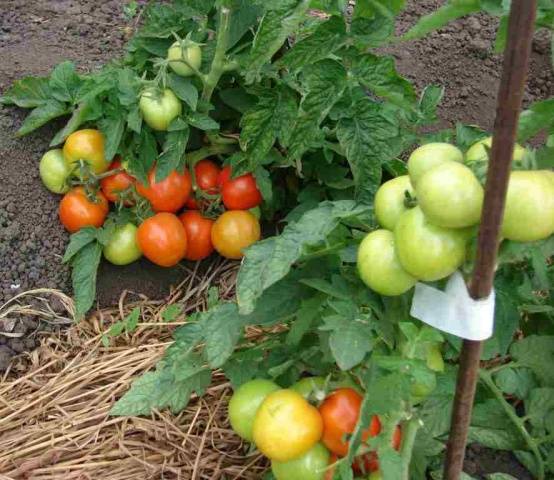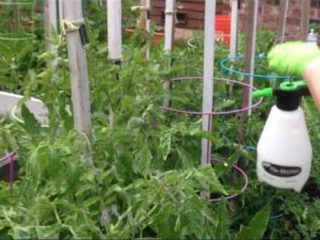Content
The Dubrava tomato can also be found under the name “Oak” - this is the same variety. It was bred by Russian breeders, intended for cultivation in open ground, suitable for small farms and garden plots. The variety is early ripening, unpretentious, and quite productive, so Dubrava is grown with pleasure in all gardens and dachas in the country. The fruits are universal, they are also suitable for pickling, pickling; tomatoes make delicious salads and sauces, juices and purees.
Characteristics and description of the variety tomato Dubrava can be found in this article. Here is a description and procedure for those who want to grow Dubrava seedlings and plant this tomato on their own plot.
Description of the variety
The Dubrava tomato is one of those varieties that can be grown in ordinary beds; they do not need to be pinched or tied up; caring for such tomatoes is easy and simple. That's why Dubrava is great for beginning gardeners; we also love this variety for those who have been growing tomatoes for many years.
Characteristics of Dubrava tomatoes:
- the variety is an early ripening variety - the first fruits turn red on the bushes already 86-90 days after the appearance of green shoots;
- the bushes are considered determinate, have an average number of shoots, and do not require pinching;
- the height of adult plants is 45-65 cm, the bushes are compact, not spreading;
- the leaves are small, light green, the inflorescences are simple, medium in size;
- the first flower ovary is formed under the 6-7th leaf, the rest alternate with every two leaves;
- ripe tomatoes are colored red, their shape is round, the skin is glossy;
- the tomato pulp is fleshy and quite tasty;
- the average weight of each fruit is 75-85 grams, there are tomatoes larger than 100 grams;
- the average yield of the Dubrava variety varies from 4.5 to 5.5 kg per square meter;
- tomatoes have good keeping quality, the appearance of the fruit and their taste do not suffer from transportation;
- The resistance of the Dubrava variety to various diseases is average, so the bushes should be regularly treated for preventive purposes.
The strengths of the Dubrava variety include:
- Early ripening, which allows harvesting in all areas before the onset of cold weather.
- Good taste characteristics.
- The universal purpose of fruits.
- Simultaneous ripening of all fruits on the bushes.
- Compact size of bushes.
- Unpretentiousness of tomatoes.
- Possibility of growing without shelter, in open ground.
- Average resistance to fungal infections and late blight.
Of course, it is worth noting that Dubrava tomatoes are not as tasty and aromatic as many large-fruited or pink tomatoes, but the quality of these fruits is much better than that of hybrid varieties. Also, Dubrava can be an excellent “backup option” and will help out the gardener in the event of the death of more capricious tomatoes.
How to grow
There is nothing complicated in breeding this variety: the gardener should adhere to standard technology for growing tomatoes. As already stated, Dubrava performed best in open ground, but, if necessary, this tomato can be planted in an unheated greenhouse.
Since the Dubrava tomato is not 100% resistant to these diseases, preventive measures are necessary (chemical treatment, ventilation, mulching, drip irrigation).
Growing tomato seedlings
Since the Dubrava tomato is intended for growing in open ground, the best planting option is the seedling method. It is necessary to grow seedlings of this tomato in accordance with the following recommendations:
- The timing of sowing seeds must be compared with the climatic characteristics of the region. Typically, tomatoes are sown as seedlings 50-60 days before the intended planting in the ground. Based on this, it can be argued that The optimal time for sowing would be mid or late March.
- Any containers are suitable for seedlings; it is preferable to choose plastic containers. There must be drainage holes at the bottom of the planting containers, since excess moisture is detrimental to tomato seedlings.
- It is better to buy soil for tomato seedlings in a specialized store, but you can prepare it yourself. Tomatoes need loose and nutritious soil that will allow air to pass through and retain water.
- Immediately before sowing, it is recommended to soak the seeds in a two percent manganese solution. You can replace permanganate with any growth stimulant.
- While the seedlings are in the house, you need to carefully monitor the soil moisture. The soil in plastic containers should not dry out, but the accumulation of moisture is also unacceptable.
- At the stage of planting tomato seedlings (when the tomatoes have the first pair of leaves), the first portion of fertilizer is applied. It is better to use complexes of mineral components at this stage.
- The tomatoes are fed again before planting in the ground, again using minerals.
- When the tomato seedlings are one and a half months old, they begin to harden them. To do this, you need to create the following conditions: maintain the temperature at 18 degrees during the day, and lower it to 12-13 degrees at night.
Planting seedlings in the ground
For a good harvest, you need to choose the right place for Dubrava:
- an area where cucumbers, lettuce, carrots, cabbage, legumes, onions or herbs grew last season;
- a well-lit place with warm soil;
- with sufficiently loose and nutritious soil that will allow air to pass well to the roots of the tomato.
Before planting tomato seedlings, the soil on the site must be dug up and all weeds and their roots, apply organic or mineral fertilizers. Dubrava seedlings are brought to garden beds only when the threat of return frosts has passed and the ground has warmed to a depth of 15 cm.
There are some rules for planting tomatoes in the ground:
- The Dubrava planting scheme is standard for all determinate compact bushes - 40x60 cm.
- Pre-made holes are watered with a solution of potassium permanganate to disinfect the soil and protect tomato seedlings from infections.
- It is recommended to bury tomatoes so that the first pair of leaves is a couple of centimeters above the surface of the ground. Such planting will allow the root system to grow and feed normally with fertilizers and receive sufficient oxygen.
- The tomato seedlings are not watered for the first 7-10 days after planting; they need time to adapt to the new place.
- When the tomatoes get stronger, their leaves and stems are no longer limp, you can begin to water the bushes as normal.
- If necessary, tomato seedlings are shaded to protect them from the scorching sun.
- When the tomatoes are sufficiently rooted and new leaves begin to appear, you can form a bush by cutting off all excess shoots and leaving two or three stems. This will help increase tomato yields and protect the plants from excessive thickening.
Now all that remains is to care for the tomato bushes. Care consists of weeding, watering, loosening the soil, and applying fertilizers. If there is a threat of tomatoes becoming infected with rot or late blight, preventive treatment should be carried out. Don’t forget about pests, so the bushes are regularly inspected.
Review
Conclusion
Today, many hybrids and varietal tomatoes have been bred, the quality of which is several times higher than the characteristics of the fruits of the Dubrava variety. However, Oak, beloved by gardeners, does not lose its relevance, remaining one of the most popular tomatoes. The whole secret of popularity lies in the unpretentiousness and stability of the variety: in heat or cold, in drought or in conditions of high humidity, the tomato will still delight you with a good harvest.
The fruits of Dubrava are somewhat hard, the size of tomatoes from one bush can vary greatly, but they store well and are good for canning.




















